Featured Exhibitions
Glass Lifeforms 2025
smash the ceiling, floor, and walls...
Myth-Science of the Gatekeepers
Marques Redd and Mikael Owunna
May 3 – July 28, 2024
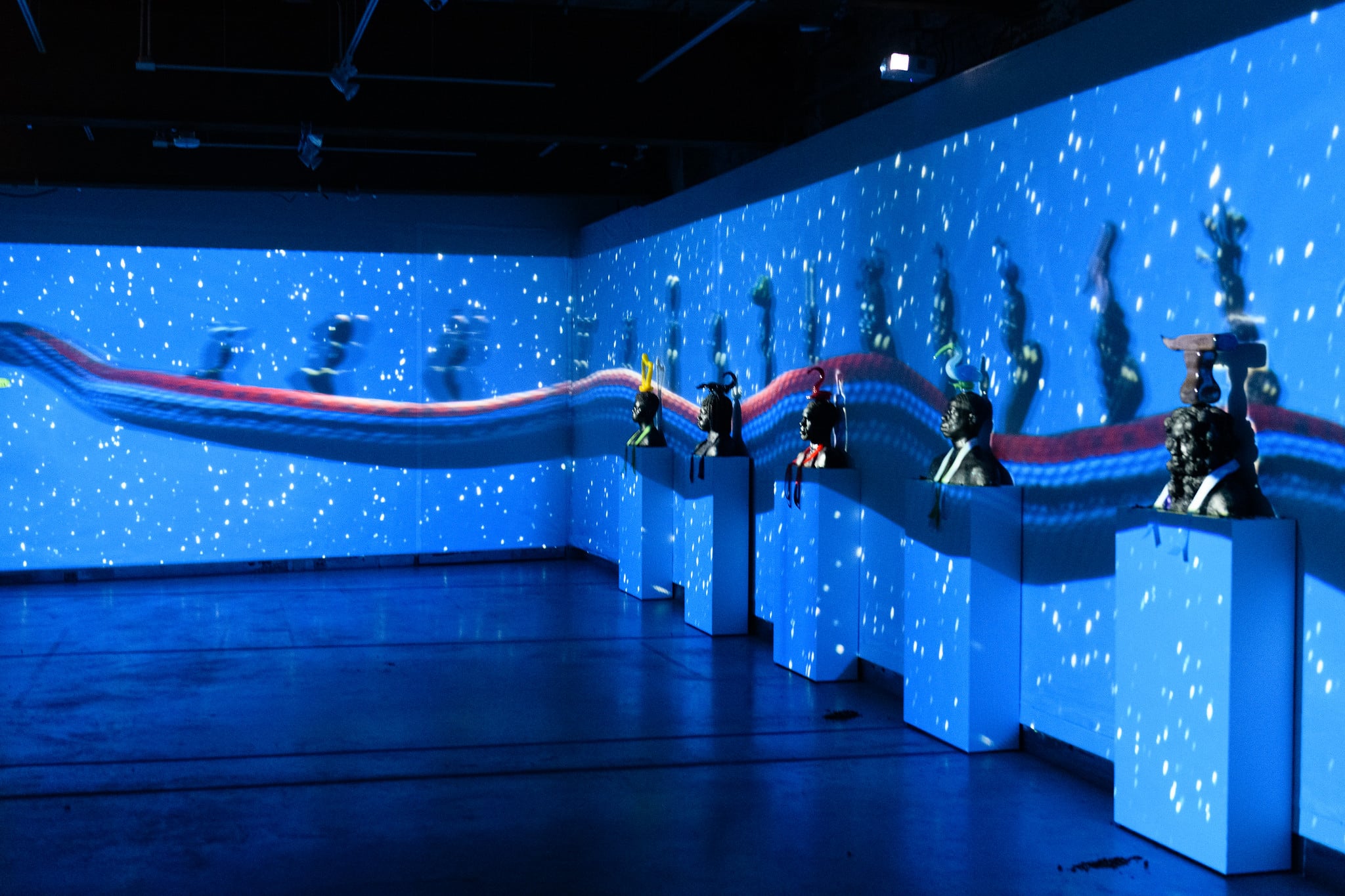
2024
smash the ceiling, floor, and walls… | 16 trailblazing women, femmes, and gender non-conforming artists examine the impact of glass ceilings | October 4, 2024 – January 20, 2025 | View Details
Myth-Science of the Gatekeepers | A collection of 16 life-size glass statues of Black queer Kemetic deities by Marques Redd and Mikael Owunna | May 3 – July 28, 2024 | View Details
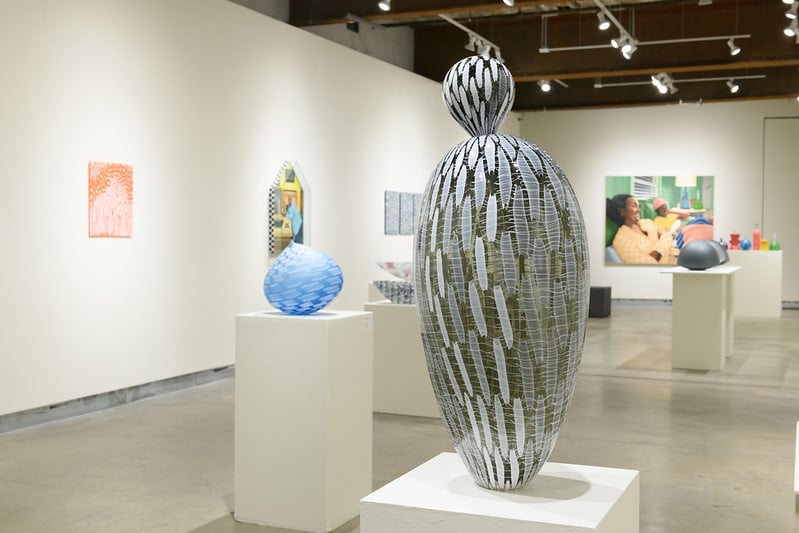
2023
Undefined | Blown Away Season 3 Finalists MiNHi England, John Moran, and John Sharvin | February 3 – July 30, 2023 | View Details
This is Becoming a Pattern | Nancy Callan, Mel Douglas, Joanna Manousis, Corey Pemberton, Nathan Sandberg, and Amanda Simmons | October 6 – December 22, 2023 | View Details
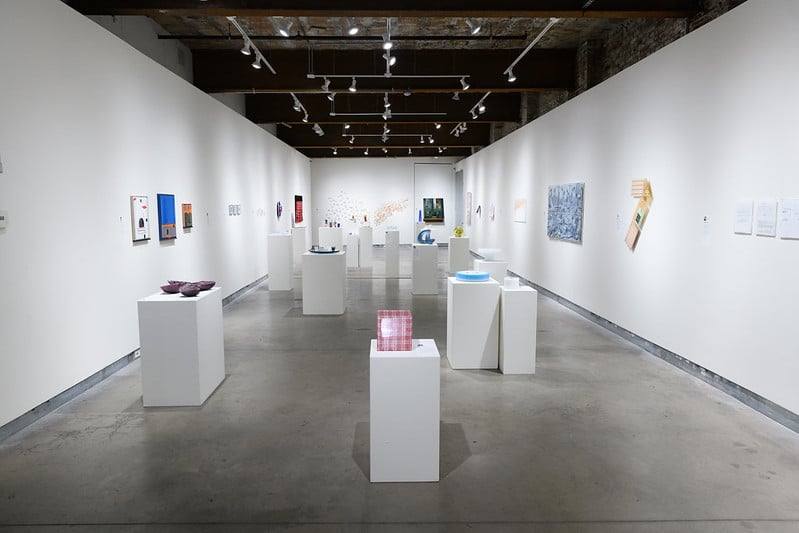
2022
Tg: Transitions in Kiln-Glass | Numerous kiln-glass artists, curated by Bullseye Glass Company | October 7, 2022 – January 22, 2023 | View Details
Full Spectrum: Visionaries Elevating Art, Craft, and Design | 18 visionary makers of color from the U.S. | February 4 – May 28, 2022 | View Details
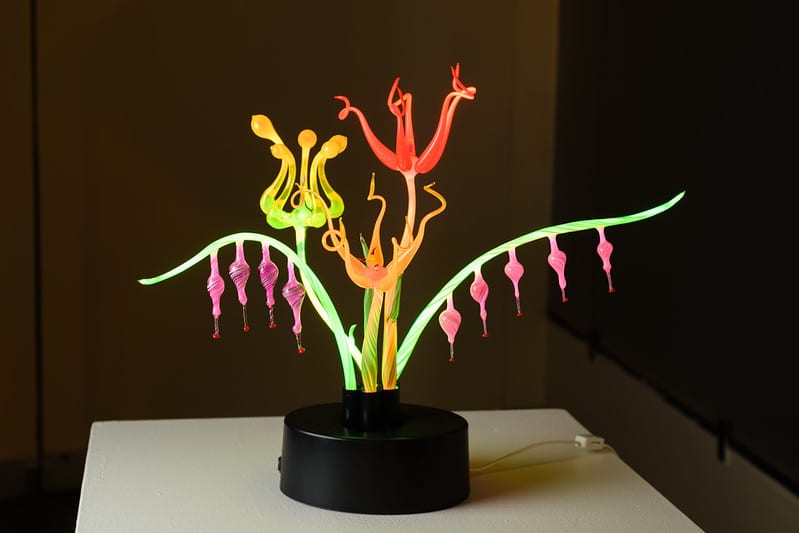
2021
LIT: Light in Tranmission | Sarah Blood, Patrick Collentine, Percy Echols II, Michael Flechtner, Mundy Hepburn, Eve Hoyt, Danielle James, Ed Kirshner, Leticia Maldonado, Denzel Russell, Harriet Schwarzrock, Megan Stelljes, Wayne Strattman, Leo Tecosky | February 5 – July 18, 2021 | View Details
Gathered Locally | Various Pittsburgh-Area Glass Artists | October 1, 2021 – January 18, 2022 | View Details
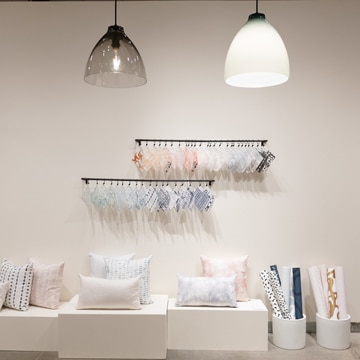
2020
The United | Najah Alboushi (Oakland, CA), Sandra Bacchi (Pittsburgh, PA), Ibraheem Basree (Columbus, OH), May Maylisa Cat (Portland, OR), Tali Grinshpan (Walnut Creek, CA), Alan Iwamura (Toledo, OH), Priscilla Kar Yee Lo (Bloomington, IL), Alexander Lozano (Dallas, TX), Alison Lowry (Northern Ireland), John Moran (US living in Temse, Belgium), Kristine Rumman & Lauren Fueyo (Philadelphia, PA), Vera Sadakova (St.Petersburg, Russia) | October 2, 2020 – January 24, 2021 | View Details
Silica Valley | Brandyn Callahan & Phirak Suon, Vanessa Cutler, Daniel Cutrone, Jenn Figg & Mathew McCormack, Fred Kahl, Joanne Mitchell, Norwood Viviano | March 6 – July 28, 2020 | View Details
Clearly New: Monmade Designs for 2020 | February 7 – 25, 2020 | View Photos
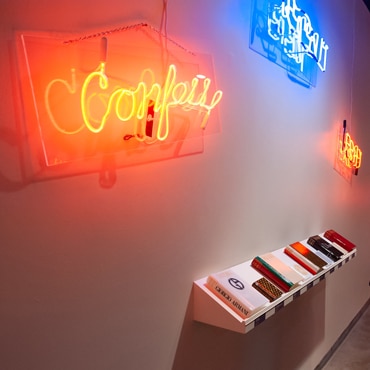
2019
Cuando el Río Suena | Jaime Guerrero | October 4, 2019 – January 26, 2020 | View Photos
Idea Furnace Retrospective | Ashley Andrykovitch, Ranjit Bhatnagar, Lauren Braun, Nicole Czapinski, Matthew Forrest, Rae Gold, Savannah Schroll Guz, Alyssa Kail, Desmond Lewis, Joshua Reiman, Daria Sandburg, Ben Schonberger, Shikeith, Becky Slemmons, Brenda Stumpf, Christine Ugbomah, Alisha Wormsley | June 7 – July 29, 2019 | View Photos
Material World | Joseph Cavalieri, Hyesook Choi, Cédric Ginart, Karina Guevin, Slate Grove, Morgan Peterson | March 1 – May 12, 2019 | View Photos
Modern Meaning | February 1 – 19, 2019 | View Photos
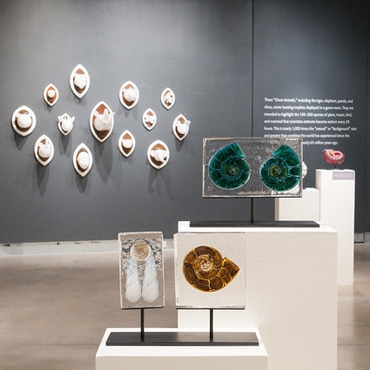
2018
All of the Suddens | Kelly O’Dell | October 5, 2018 – January 22, 2019 | View Photos
Making the Ordinary Extraordinary | Chris Clarke, Sarah Cohen, Ron Desmett, Jason Forck, Liz Fortunato, Dana Laskowski, Mike Mangiafico, Ashley McFarland, Kathleen Mulcahy, Lyla Nelson, Ed Pinto, Travis Rohrbaugh, John Sharvin, Becky Smith, Margaret Spacapan | June 1 – July 31, 2018 | View Photos
Dialogues in Clay and Glass | Sharif Bey | March 2 – May 6, 2018 | View Photos
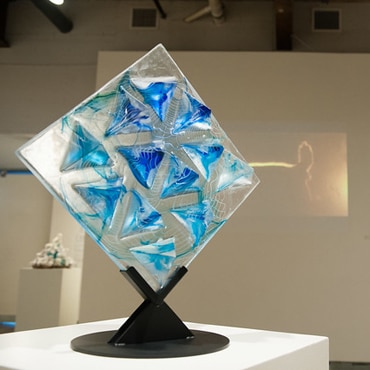
2017
Interiors with Impact: A Monmade Exhibition | December 1, 2017 – February 18, 2018 | View Photos
Embodiment | Carolyn Baum, Heather M. Behrendt, Jill Benfield, Jennifer Blazina, Sabina Boehm, Deborah Carlson, Eunsuh Choi, Sarah E. Cohen, Alberto Corte, Ronit Dagan, Meredith Edmondson, Lezlie Foster, Alexandra Fresch, Nolly Gelsinger, Nina Sam Hibler, Lisa M. Johnson, Leslie Kaplan, Floor Kaspers, Joy L. Knepp, Natalia N. Komorowska, Laura Beth Konopinski with Jason Forck and Valerie Herrero, Lou Krueger, Sara Sally LaGrand, Ronnie Lambrou, Heather Larivee, Stephanie Maddalena, Michael Mangiafico, Melissa A. Melan, Ben Miller, Linda Newnham, SaraBeth Post, Gillian Preston, Madeline Rile-Smith, Laurie Salopek, Daria Sandburg and Percy Echols II, Barbara B. Simon, Lisa F. St. Martin, Ann Steenkiste, Tiger Waddell, Jeri Warhaftig, Deborah B. Weaver, Jeri J. Wiskus, Margaret L. Zinser Hunt, Caterina Zucchi | October 6 – November 19, 2017 | View Photos
States of Flux | Leana Quade | May 5 – July 30, 2017 | View Photos
Emerge/Evolve 16 | Helen Lee: Gold Award, Marzena Krzemińska-Baluch: Silver Award, Alison Lowry: Bronze Award, Ashraf Hanna: Crossover Award (For an entrant who first began working or taking classes in kilnformed glass since January 1, 2014), Kate Clements (Temple University): Gold Academic, Jeffrey Stenbom (Tulane University): Silver Academic, Nick Doran Adams (Australian National University): Bronze Academic, Ligia Bouton: Honorable Mention, Cheryl Wilson Smith: Honorable Mention
Kim Brill: Honorable Mention, Rei Chikaoka (Emerge 2010 and 2014), Matthew Day Perez (Emerge 2008 and 2010), Carmen Vetter (Emerge 2006 and 2008) | February 3 – April 16, 2017 | View Photos
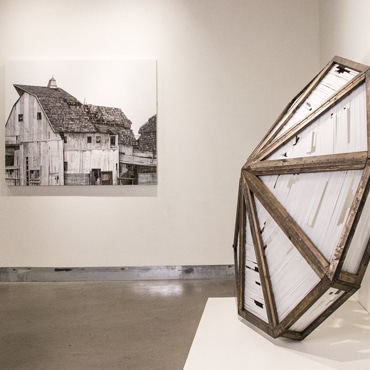
2016
Dissolution | Seth Clark, Jason Forck | October 7, 2016 – January 16, 2017 | View Photos
Turned On: Lighting Hooks Up with Sculpture | Rik Allen from Sedro Woolley, WA, Christina Bothwell & Robert Bender from Stillwater, PA, Amber Cowan from Philadelphia, PA, Jean Fernandes from Arlington, TX, Adam Holtzinger & Susan Spiranovich from Brooklyn, NY, Evan Kolker from Oakland, CA, Carmen Lozar & Matthew Urban from Normal, IL, Leah Lynn and Julian Maturino from Pittsburgh, PA, Janis Miltenberger from Lopez Island, WA, Corey Pemberton from Spruce Pine, NC, Susan Taylor Glasgow of Columbia, MO, Leo Tecosky from Brooklyn, NY | June 3 – September 11, 2016 | View Photos
Lifeforms 2016 | February 5 – May 15, 2016 | View Photos
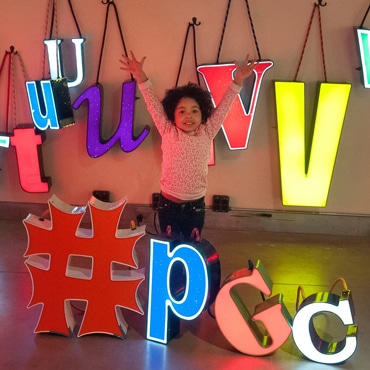
2015
Indagare | Therman Statom | October 2, 2015 – January 19, 2016 | View Photos
Out of the Archives and Into the Gallery | June 19 – September 13 | View Photos
ABC@PGC | Jen Elek, Jeremy Bert | March 6 – June 7, 2015 | View Photos
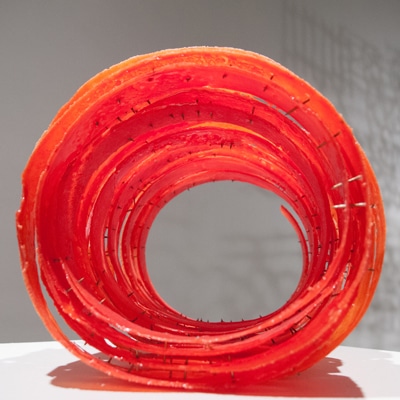
2014
Emerge/Evolve | Rei Chikaoka , Kate Clements, Marion Delarue, Abram Deslauriers, Opie Hileman, Manuela Castro Martins, Anna Mlasowsky, Martie Negri, Nathan Sandberg, Amanda Simmons, Cheryl Wilson Smith, James B. Thompson, Kathryn Wightman, Gina Zetts | November 7, 2014 – January 18, 2015 | View Photos
Pittsburgh Biennial at Pittsburgh Glass Center | Robert Beckman, Jeremy Boyle, Melissa Fitzgerald, Jason Forck, Toby Fraley, Vanessa German, Ashley McFarland, Juliet Pusateri, Travis Rohrbaugh, Will Schlough, Kara Skylling, Margaret Spacapan | August 1 – October 26, 2014 | View Photos
Breaking Through: Moving 4ward | Lisa Demagall, Laura Beth Konopinski, Anna Mlasowsky, Nadine Saylor | May 2 – July 20, 2014 | View Photos
Halfway to Somewhere | Granite Calimpong, Brent Roger | February 7 – April 20, 2014 | View Photos
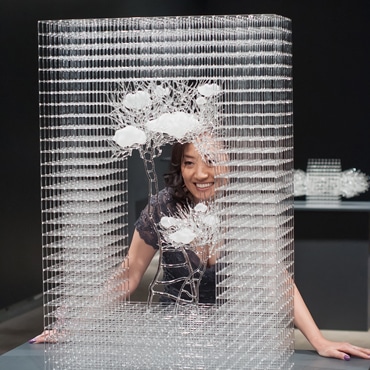
2013
SiO2: High School Reunion | Hunter Blackwell, Andrew Certo, Gayle Forman, Elizabeth Fortunato, Morgan Gilbreath, Matthew Kolbrener, Dana Laskowski, Zach Layhew, Chris Ross, Maria Sartori, Beyvan Schantz, Connor Scott | December 6, 2013 – January 26, 2014 | View Photos
Lifeforms | Various Artists | July 5 – November 17, 2013 | View Photos
Consciousness | Eunsuh Choi | February 1 – June 16, 2013 | View Photos
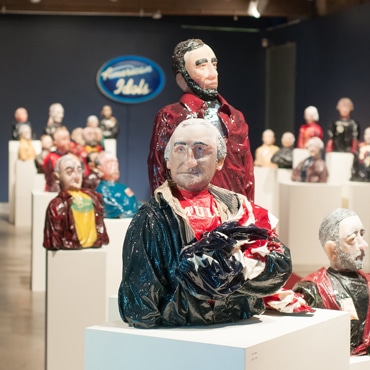
2012
American Idols | John Moran | August 3, 2012 – January 21, 2013 | View Photos
10 Years of Bottles and Bobs: A Survey | Nick Mount | June 1 – July 15, 2012 | View Photos
ASPIRE: A Retrospective of Young Talent | Jess Amarnek, Jason Bauer, Jon Capps, Zach Compton, Brian Engel, Daneal Ferraro Hansel, Kaley Finegan, Jason Forck, Elizabeth Fortunato, Jarrod Futscher, Billy Guilford, William Haynes, Everett Hirche, Chris Hofmann, Laura Konopinski, Janice Larko, Ashley McFarland, Scott Percival, Liz Potenza, Suzie Ririe, Travis Rohrbaugh, Becky Smith | March 2 – May 20, 2012 | View Photos
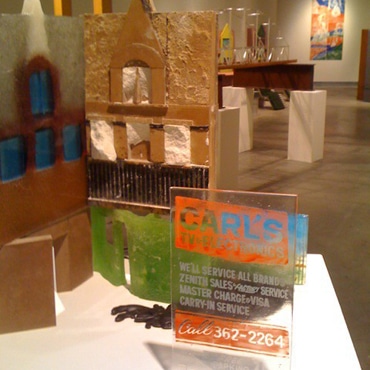
2011
Ten More Years on Penn | Gwylene Gallimard, Jean Marie Mauclet | October 7, 2011 – February 11, 2012 | View Photos
10x10x10: Xtreme Art Comes in Small Packages | Various Artsits | May 6 – September 18, 2011 | View Photos
TENacity | Jessica Amarnek, Jason Bauer, Dave Born, Daviea Davis, Diana Dugina Riebling, Darlene Durrwachter Rushing, Chris Clarke, Brian Engel, Matt Eskuche, Melissa Fitzgerald, Jason Forck, Arthur Guilford, Drew Hine, Chris Hofmann, Leslie Kaplan, Theo Keller, Adam Kenney, Samantha Laffey, Joe Lappa, Zachary Layhew, Mike Mangiafico, Heather McElwee, Ashley McFarland, Jeffrey Phelps, Gillian Preston, Heather Joy Puskarich, Elizabeth Potenza, Travis Rohrbaugh, Nick Russo, Jessica Rutherford, Becky Smith | February 4 – April 17, 2011 | View Photos
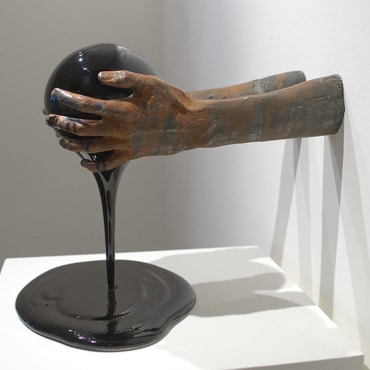
2010
The Way of Samsara | Fumino Hora | November 5, 2010 – January 24, 2011 | View Photos
Hot Stuff | John Miller| | July 2 – September 26, 2010 | View Photos
From the Earth to the Fire and Back | Hunter Blackwell, Sean Broderick, Chris Clarke, Theresa Cress, Daviea Davis, Brian Engel, Melissa Fitzgerald, Jason Forck, Gayle Forman, Everett Hirche, Chris Hofmann, Leslie Kaplan, Adam Kenney, Ed King, Samantha Laffey, Joe Lappa, Zachary Layhew, Dan LeDonne, Michael Mangiafico, Heather McElwee, Ashley McFarland, Kathleen Mulcahy, Carley Jean Parrish, Jeff Phelps, Elizabeth Potenza, Heather Joy Puskarich, Jessica Rutherford, Rebecca Smith | March 5 – June 13, 2010 | View Photos
Behind the Lens | Nathan J. Shaulis | February 5 – 28, 2010
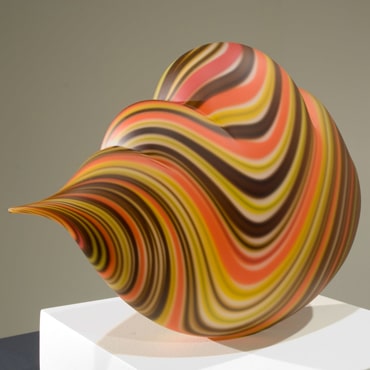
2009
The Return | Sheila Klein | October 2, 2009 – January 10, 2010 | View Photos
Seventh-Inning Stretch | Nancy Callan | July 3 – September 27, 2009 | View Photos
Neighborhood Mosaic Project | Daviea Davis | April 3 – June 14, 2009 | View Photos
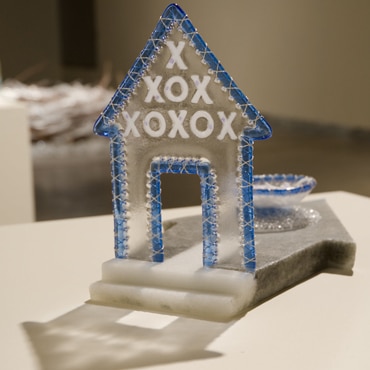
2008
Absence of Body | Susan Taylor Glasgow | October 3, 2008 – January 9, 2009 | View Photos
Glass & Steel: Art Transcends Industry | Bill Ballard, Hunter Blackwell, Dave Born, Donna Broderick, Jonathan Capps, Judi Charlson, Chris Clarke, Karin Coyne, Theresa Cress, Brian Engel, Daneal Ferraro, Marianne Filiaggi, Jason Forck, Doug Hansel, Leslie Kaplan, Claire Kelly, Samantha Laffey, Dana Laskowski, Dan LeDonne, Jan Loney, Melissa Melan, Hilde Munck, Jeffrey Phelps, Elizabeth Potenza, Heather Joy Puskarich, Suzanne Ririe, Tina Rojas, Darlene Durrwachter Rushing, Nick Russo, Jessica Rutherford, Anthony Schafermeyer | May 2 – September 5, 2008 | View Photos
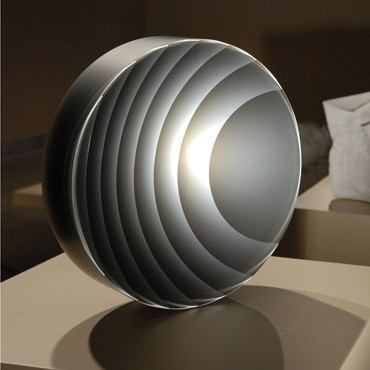
2007
Recollections | Michael Rogers, Richard Hirsch | November 2, 2007 – March 30, 2008 | View Photos
Allure of Japanese Glass | Fujiko Enami, Hiroshi Hamadate, Shiho Hayazaki, Sono Kago, Yasuko Kita, Toshikazu Kobayashi, Yukako Kojima, Yoshiaki Kojiro, Itcho Matsuo, Mikiko Nakano, Ken-ichi Sasakawa, Kentaro Senuma, Hikaru Shimada, Tomoe Shizumi, Yoko Togashi, Nobuyasu Toyooka, Misaki Urushiyama | May 4 – September 16, 2007 | View Photos
Glass Birthday Suit | Scott Aiken, Jesse Amar, David Born, Carol R. Brode, Chris Clarke, Zachary Compton, Jonathan Capps, Theresa Cress, Chad Cully, Randi Dauler, Kathleen Mendus Dlugos, Matthew Eskuche, Daneal Ferraro, Marianne Filiaggi, Jason Forck, Leslie Foxson, Brian Frus, Barbara Gengler, Gary Guydosh, Daniel J. Johnese, Leslie Kaplan, Adam Kenney, Sungsoo Kim, Sam Laffey, Joseph Lappa, Deborah LeDonne, Dan LeDonne, Marcus A. Louie, Mike Mangiafico, Jeannine Manint, Kelly Maze, Kathy McHoes, Hilde Munck, Stephanie Natale, Lindsay O’Leary, Scott A. Percival, Jeffrey Phelps, Donna Powers, Stephen Protheroe, Juliet Pusateri, Suzie Ririe, Darlene Durrwachter Rushing, Jessica Rutherford, Laurie Salopek, Nathan J. Shaulis, Dan Sullivan, Sherri Taus, Brad Tucker, Jim Tucker, Miles Van Rensselaer, Deborah B. Weaver, Sean Winters, Alex Wojtyna, John Wojtyna, Bill Zarvis, Cass Zielinski | February 2 – April 8, 2007 | View Photos
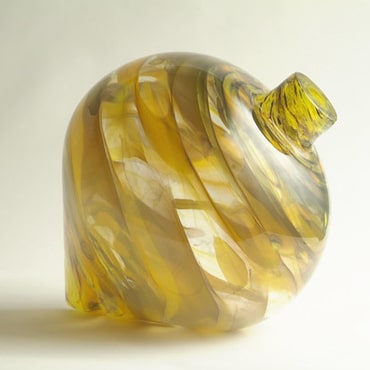
2006
Nebula | Hilary Harp, Suzie Silver | October 6, 2006 – January 5, 2007 | View Photos
Truth/Beauty | Kathleen Mulcahy, Ron Desmett | April 21 – September 8, 2006 | View Photos
Glass Birthday Suit | Scott Aiken, Dave Born, Susan Callahan, Dan Casciato, Chris Clarke, Theresa Cress, Randi Dauler, Justin Donaldson, Darlene Durrwarcher-Rushing, Daneal Ferraro, Kaley Finegan, Jason Forck, Leslie Foxon, Brian Frus, Jane Haskell, Drew Hine, Daniel Johnese, Leslie Kaplan, Samantha Laffey, Joe Lappa, Dan LeDonne, Mike Mangiafico, Jeannine Manitt, Heather McElwee, Stephanie Natale, Lindsay O’Leary, Duff O’Brien, Donald Ortlieb, Jeff Phelps, Stephen Protheroe, Susie Ririe, Fred Rock, Jami Rutherford, Jessica Rutherford, Laurie Salopek, Mary Tabasko, Andy Tepper, Sean Winters, Bill Zarvis | January 27 – March 31, 2006 | View Photos
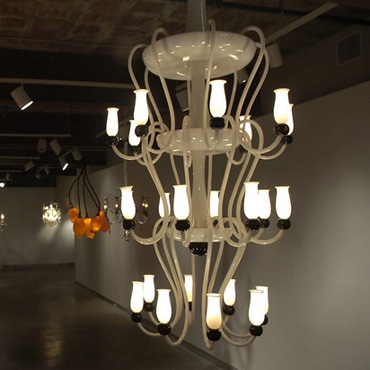
2005
Well Hung: Chandeliers Revealed | Gavin Benjamin, Ron Desmett, Katherine Gray, James Minson, James Mongrain, Kathleen Mulcahy, Jill Reynolds, Ginny Ruffner, Emilio Santini, Daniel Spitzer | October 7, 2005 – January 6, 2006 | View Photos
Implied Narratives | Jennifer Blazina, Anna Thiel | April 1 – June 30, 2005 | View Photos
Glass Birthday Suit | Scott Aiken, Chris Barley, David Born, Susan Callahan, Dan Casciato, Ed Christianson, Chris Clarke, Theresa Cress, Randi Dauler, Justin Donaldson, Matt Eskuche, Daneal Ferraro, Kaley Finegan, Brain Frus, Barb Gengler, Drew Hine, Soo Yeon Jeong, Daniel Johnese, Leslie Kaplan, Adam Kennedy, Samantha Laffey, Joe Lappa, Dan LeDonne, Sarah Lemoine, Dan Lieb, Michael Mangiafico, Jeannine Manint, Heather McElwee, Stephanie Natale, Duff O’Brien, Lindsay O’Leary, Donald Ortlieb, Jeffrey Phelps, Suzie Ririe, Fred Rock, Brooke Rothshank, Tracy Stone, Mary Tabasko, Sean Winters, Alex Wojtyna, Ben Wojtyna, John Wojtyna, Bill Zarvis, Cass Zielinski | January 21 – March 25, 2005
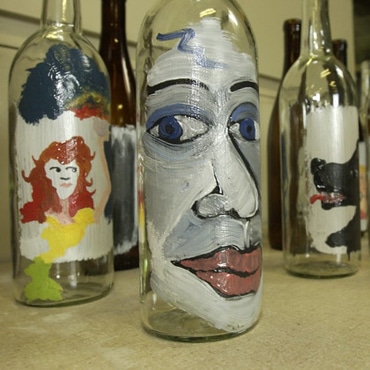
2004
Cages Dorées | Nadége Desgenétez | November 5 – December 10, 2004 | View Photos
Now and Then: CUD 2004 15 Years of Collaboration | John Drury, Robbie Miller | May 7 – September 4, 2004 | View Photos
Summer Instructor Exhibition | Anna Boothe, Jonathon Clemmer, Theresa Cress, CUD: John Drury and Robbie Miller, Paul Cunningham, Nadege Desgenetez, Fritz Dreisbach, Matt Eskuche, Tom Farbanish, Jiri Harcuba, Caitlin Hyde, Frantisek Janak, Claire Kelly, Caroline Madden, Greg Nangle, Duff O’Brien, Jeff Phelps, Kirstie Rea, Jill Reynolds, Elizabeth Ryland Mears, Anthony Schafermeyer, Michael Schunke, Bandhu Scott Dunham, Dan Spitzer, Loren Stump, Randy Walker, Jen Zitkov | March 5 – April 25, 2004
Glass Birthday Suit | Scott Aiken, Chris Barley, Ashley Brickman, Susan Callahan, Joe Callahan, Dan Casciato, Ed Christianson, Randi Dauler, Justin Donaldson, Barb Gengler, Rick Goldman, Jarred Goldman, Ashley Harwood, Ralph Jannini, Daniel Johnese, Leslie Kaplan, Joe Lappa, Dan Mioam, Courtney Milam, Stephanie Natale, Lindsay O’Leary, Jeffery Phelps, Fred Rock, Mary Tabasko, Mimi Wertheimer, Bill Zarvis, Cass Zielinski | January 16 – February 28, 2004
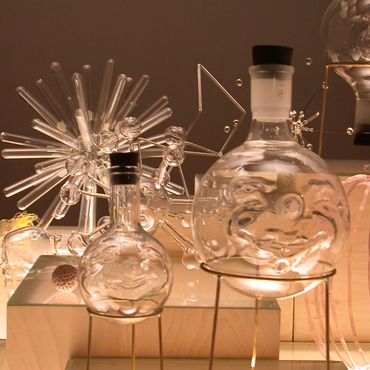
2003
Looking Back & Reaching Forward | Fritz Dreisbach, Henry Halem| October 13 – December 13, 2003 | View Photos
Matter | Jill Reynolds | May 2 – June 28, 2003 | View Photos
Summer Instructor Preview | Drew Hine, Frantisek Janak, Clair Kelly, Michael Mangiafico, Elizabeth Ryland Mears, John Miller, Jeffrey Phelps, Duff O’Brien, Jill Reynolds, Davide Salvadore, Anthony Schafermeyer, Daniel Spitzer, Karen Willenbrink | March 7 – April 19, 2003
Glass Birthday Suit | Chris Barley, Chris Beech, Dave Born, Ashley Brickman, Arial Brice, Susan Callahan, Chris Clarke, Theresa Cress, Justin Donaldson, Diana Dugina, Darlene Durrwacchter Rushing, Alex Gerber, Ashley Harwood, Dany Hassinger, Drew Hine, Daniel Johnese, Leslie Kaplan, Heather Leifeste, Michael Mangiafico, Kate Masleid, Heather McElwee, Courtney Milam, Duff O’Brien, Lindsay O’Leary, Matteo Orsini, Donald Ortlieb, Jeffery Phelps, Alli Pultz, Fred Rock, Matt Shewchuk, Jake Stout, Mary Tabasko, Emily Treat, Ted Williams, Cass Zielinski | January 17 – February 15, 2003 | View Photos
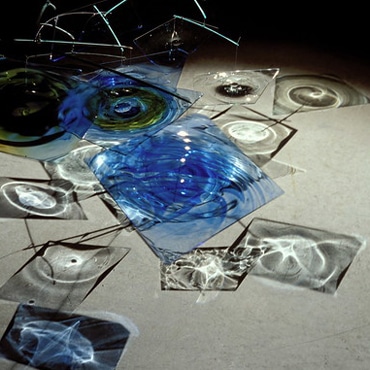
2002
Artists Crossing Lines | Patricia Bellan-Gillen, Ron Desmett, Andrew Johnson, Carol Kumata, Martin Prekop | November 1, 2002 – January 3, 2003 | View Photos
The River | Robin Stanaway | May 4 – September 14, 2002 | View Photos



